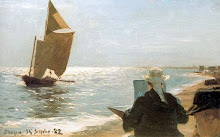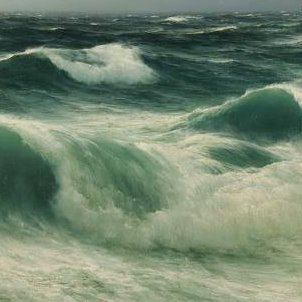Grey Surf under Summer Storm, 24 x 30 inches, © 2010 Katherine Kean. Used with permission.
The American artist Katherine Kean paints the sublime and mysterious moods of nature with a fine touch.
On her blog she mentions that she uses cadmium orange mixed with ultramarine blue (complementary opposite color) and a little alizarin to produce a rich and interesting near-black color.
See more of Katherine's work at her website: www.katherinekean.com












































